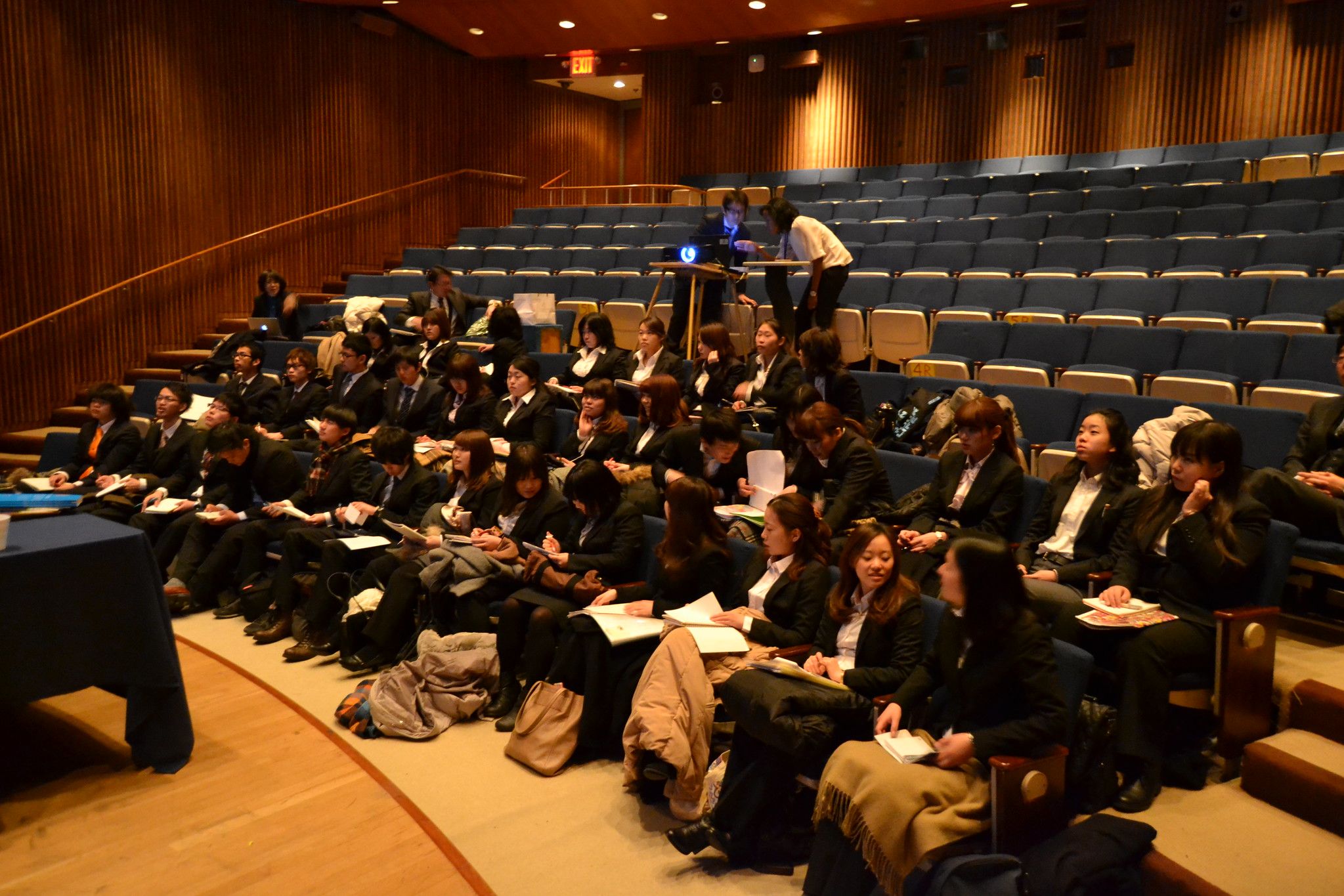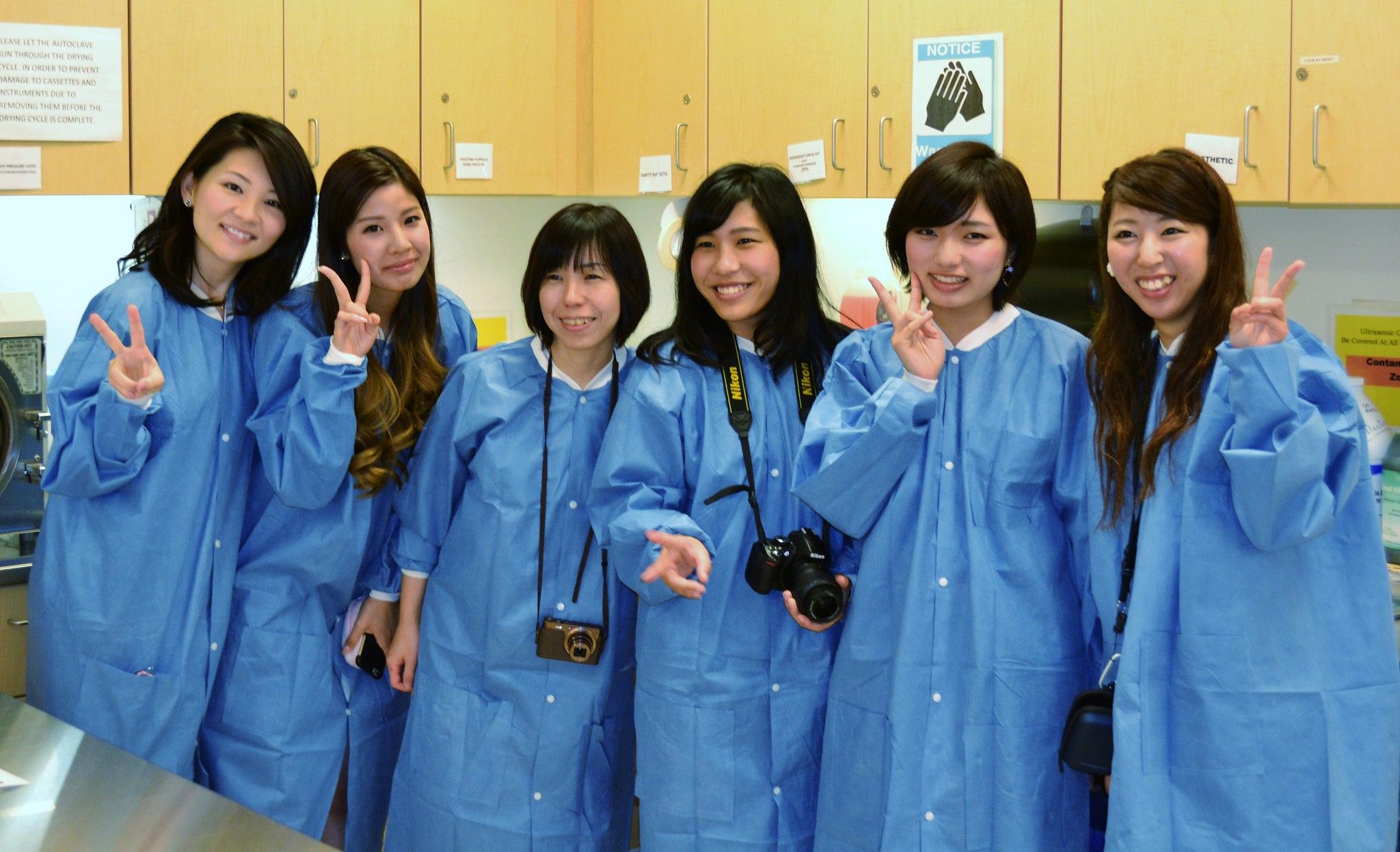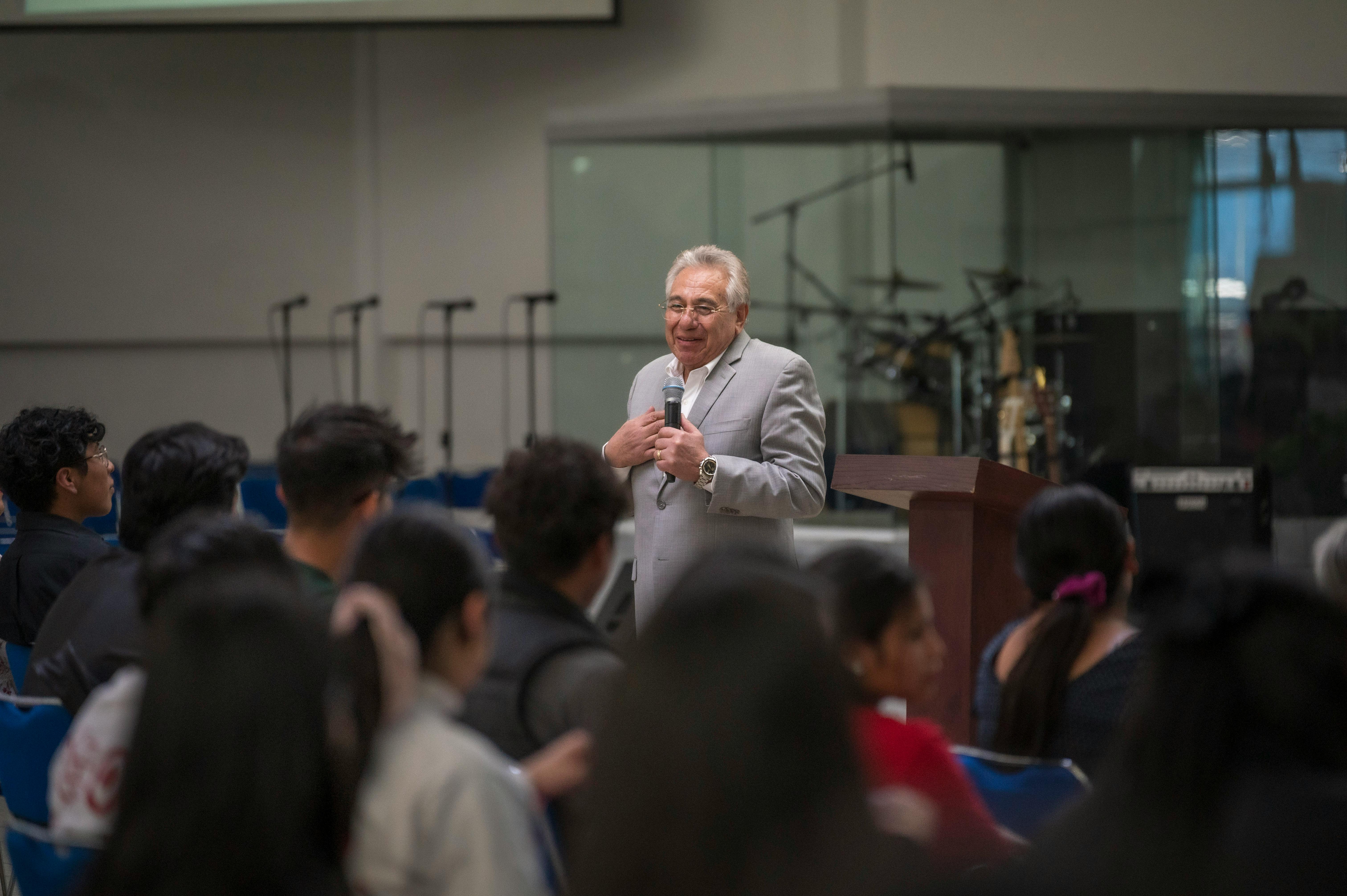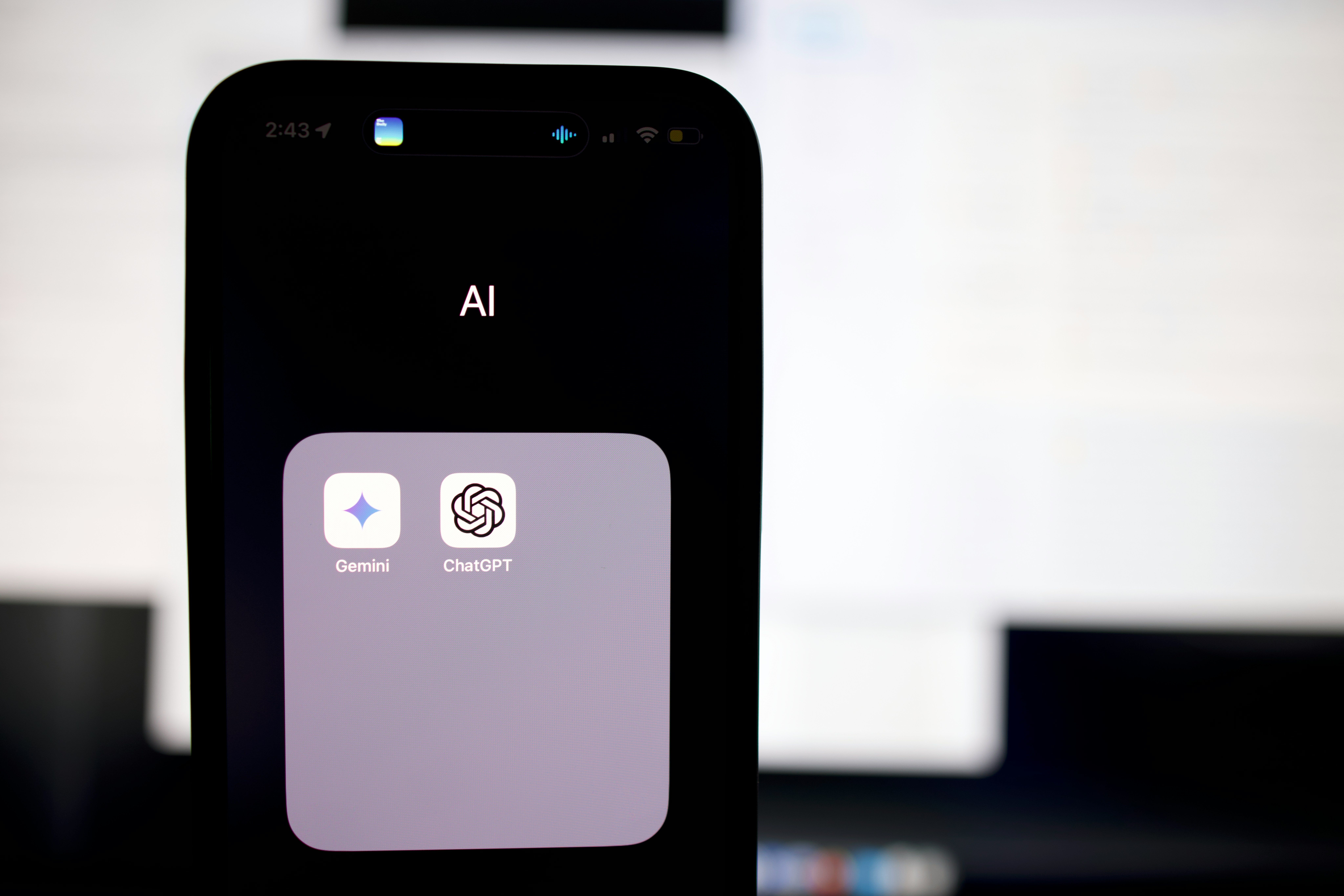The integration of Artificial Intelligence (AI) in Japanese universities has been an ongoing adoption in the educational landscape of Japan. As AI technologies evolve rapidly, they offer unique opportunities for innovation in various academic and administrative processes. Universities across Japan are not only incorporating AI to enhance teaching and learning experiences but also utilizing these technologies for administrative efficiency and research advancements. This embrace of AI by Japanese universities is driven by the desire to maintain global competitiveness and address domestic challenges like aging demographics and workforce automation.
Detection Systems to Identify AI-Generated Content in University Applications

"Mr. Hisashi Izumi from UNDP's Regional Bureau for Africa/ TICAD briefs Japanese students from Bunkyo University" by United Nations Development Programme is licensed under CC BY-NC-ND 2.0.
In recent years, Japanese educational institutions have taken steps to maintain the integrity of their university application processes in the face of emerging technologies. The use of artificial intelligence (AI) to craft personal statements and other application materials has necessitated the development of systems to detect such content.
Development of AI detection tools by Kawaijuku Educational Institution
Kawaijuku Educational Institution has pioneered the creation of a detection system designed to identify the use of generative AI in student applications. This system integrates advanced algorithms that analyze the nuances and patterns in the text, comparing them against characteristics typical of AI-generated content. Developed in collaboration with technology provided by Google LLC, this tool focuses particularly on personal statements, where the authenticity of the applicant's voice is crucial.
Accuracy issues and error rates in AI detection systems
Despite the high level of sophistication in these detection systems, they are not without flaws. According to Kawaijuku Educational Institution, while the tool performs exceptionally well with longer texts, encompassing around 500 to over 1,000 characters, it still presents a 5% error rate. This indicates that on occasion, genuine, human-produced content might be mistakenly flagged as AI-generated, or vice versa, highlighting the ongoing challenges in perfecting AI detection technology.
Positions of various universities on the use of AI in applications
The stance on AI-generated content in university applications varies widely among institutions. For instance, Sophia University and Aoyama Gakuin University have outright banned the use of generative AI tools in their application processes. Conversely, Saga University acknowledges the challenges in definitively identifying AI-assisted content, citing the need for a broader evaluative approach that includes interviews and assessments beyond written submissions.
Impact of AI on Employee Retention Predictions in Japanese Companies

"Japanese Dental Hygiene Students Visit 2015 24" by COD Newsroom is licensed under CC BY 2.0.
AI technology has not only transformed educational avenues but also revolutionized corporate practices in Japan. One significant area of AI application is in predicting employee retention, a vital aspect of human resource management.
How AI predicts employee turnover
Developed by Professor Naruhiko Shiratori and a Tokyo-based startup, the AI tool employed by Japanese companies scrutinizes a myriad of data points. It factors in attendance records, job duration, personal demographics like age and gender, and other relevant information to forecast potential employee turnover. This predictive capability enables companies to proactively address retention challenges.
Benefits for managers in providing targeted support
The foremost advantage for managers using AI in retention strategies is the ability to offer personalized support. By identifying employees at risk of departure, managers can intervene early, tailoring their approaches to meet the specific needs and concerns of each employee, thereby increasing overall job satisfaction and loyalty.
Data analytics used by AI tools in predicting retention
The success of AI in predicting employee turnover rests on its capacity to perform complex data analytics. By processing and analyzing large datasets, AI tools can detect patterns and trends that may not be immediately apparent through traditional analytical methods. This allows for a more accurate assessment of risk factors contributing to employee turnover, forming the basis for informed managerial strategies and interventions.
Student Usage of Generative AI in Academics

"Cathedral of Learning Japanese Classroom" by Vironevaeh is licensed under CC BY-SA 2.0.
Extent and modes of AI usage among university students
Japanese university students are increasingly utilizing generative AI tools like ChatGPT for academic purposes. A survey highlighted that approximately 46.7% of students have used generative AI, with 28.9% doing so regularly. The primary applications include assistance in writing papers and reports, aiding in foreign language translation, and serving as a virtual discussion partner. These tools are frequently used to augment students' learning experiences and improve their academic writing and research capabilities. Students have expressed that AI tools significantly enhance their writing skills and encourage a deeper level of thinking, although they are careful to blend AI-generated content with their own ideas.
University policies on generative AI use in academics
Amidst the growing usage of AI, Japanese universities are developing stringent policies to regulate its use. Institutions like Sophia University and the University of Tokyo have set clear guidelines, outright banning the unapproved use of generative AI in coursework and emphasizing the importance of original student work. These universities enforce severe penalties if the policies are breached, although they allow some flexibility if the use of AI is explicitly sanctioned by a faculty member. The goal is to maintain academic integrity while also recognizing the potential educational benefits of AI when used responsibly.
Future trends in AI adoption by students
The trend towards integrating AI into academic life is expected to grow, with more students showing interest in using these technologies. Universities are likely to continue refining and expanding their AI policies, incorporating more robust detection systems to ensure that AI tools are used appropriately. The focus will likely shift towards not just preventing misuse but also educating students on the effective and ethical use of AI to enhance their learning journeys.
Institutional Strategies and Policies on AI Integration

Photo by WANG Tianfang on Unsplash
Early adoption stages and their impact on teaching methods
Japanese universities are in the early stages of adopting AI, which is beginning to transform teaching methods traditionally dependent on lecture-based learning. The initial integration of AI is encouraging more interactive and discussion-based teaching styles. Tools like AI-driven bots are being used in classrooms to reduce administrative burdens on faculty, allowing them more time for research and interactive teaching. This shift is aimed at fostering a more engaging and responsive learning environment that promotes critical thinking and active learning among students.
Guidelines from the Ministry of Education on AI use
The Ministry of Education in Japan has issued guidelines urging universities to develop their own AI policies. These guidelines recommend that AI should support, not replace, the learning process, emphasizing the need for students to engage critically with information rather than passively receiving AI-generated content. Universities are encouraged to integrate AI in a manner that supports academic integrity and reinforces independent learning, such as requiring students to cite the AI tools used in their work and incorporating oral exams to verify individual student understanding.
Emphasis on reducing AI dependency among students
Recognizing the risk of over-reliance on AI, the Ministry of Education and universities are taking measures to ensure that students use these tools judiciously. There is a concerted effort to balance the benefits of AI with the need for students to develop their own cognitive and analytical skills. This includes encouraging an educational environment that does not solely focus on technological proficiency but also promotes a broad spectrum of academic and interpersonal skills necessary for holistic development. This approach aims to prepare students for academic success and also for responsible and informed participation in a rapidly evolving digital world.







